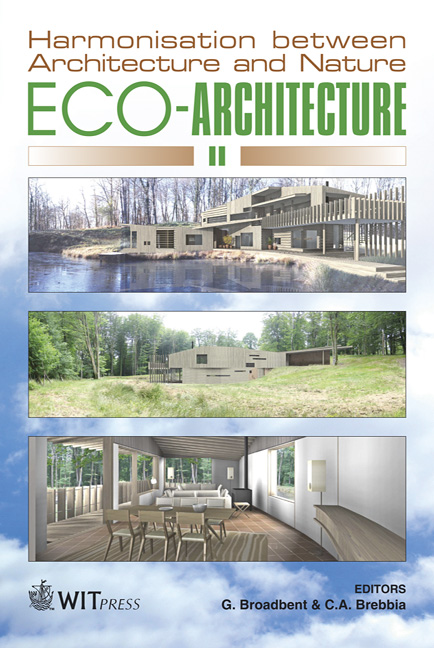Modern Interpretation Of FengShui In Contemporary Sustainable Residential Design
Price
Free (open access)
Transaction
Volume
113
Pages
10
Page Range
47 - 56
Published
2008
Size
1,703 kb
Paper DOI
10.2495/ARC080051
Copyright
WIT Press
Author(s)
Z. Zhong & B. Ceranic
Abstract
The FengShui practice, through its core philosophy, has for centuries embraced sustainability in the design of traditional living environments and natural settlements in China. There are many encounters of sustainable FengShui manifestations in the ancient Chinese settlements, some of which have been studied in this research and interpreted from the theoretical, environmental, ecological, socio-cultural and economic perspectives. Based on the research findings and their contemporary interpretation, the link between the research and practice has been formed via undertaking the residential development design study on location in Shanghai. The results of the study thus far are reported in this paper in terms of their urban and design resolution, focusing on the pursuance of the balance between three main aspects – energy, environment and ecology. The unification between circulation of Qi and environmental elements is reflected in its modern context and represented in terms of master planning on the macro scale and consideration of shelter environmental qualities on the micro scale. Keywords: FengShui, Qi, balance, sustainable design, environment, energy. 1 Introduction FengShui ( ) is an ancient Chinese practice for achieving harmony and balance with one’s environment; in choosing a place to live, siting a grave, planning a farm, even arranging furniture in a room. In Chinese, the literal meaning of ‘Feng’ is wind and of ‘Shui’ is water; water and wind being two mediums carrying and dispersing Qi. The actual name originates from The Burial Book written by Guo, Pu (276 – 324), but the rudimental principles of FengShui practice can be traced back as early as Zhou Dynasty and later Qin Dynasty [2].
Keywords
FengShui, Qi, balance, sustainable design, environment, energy.





